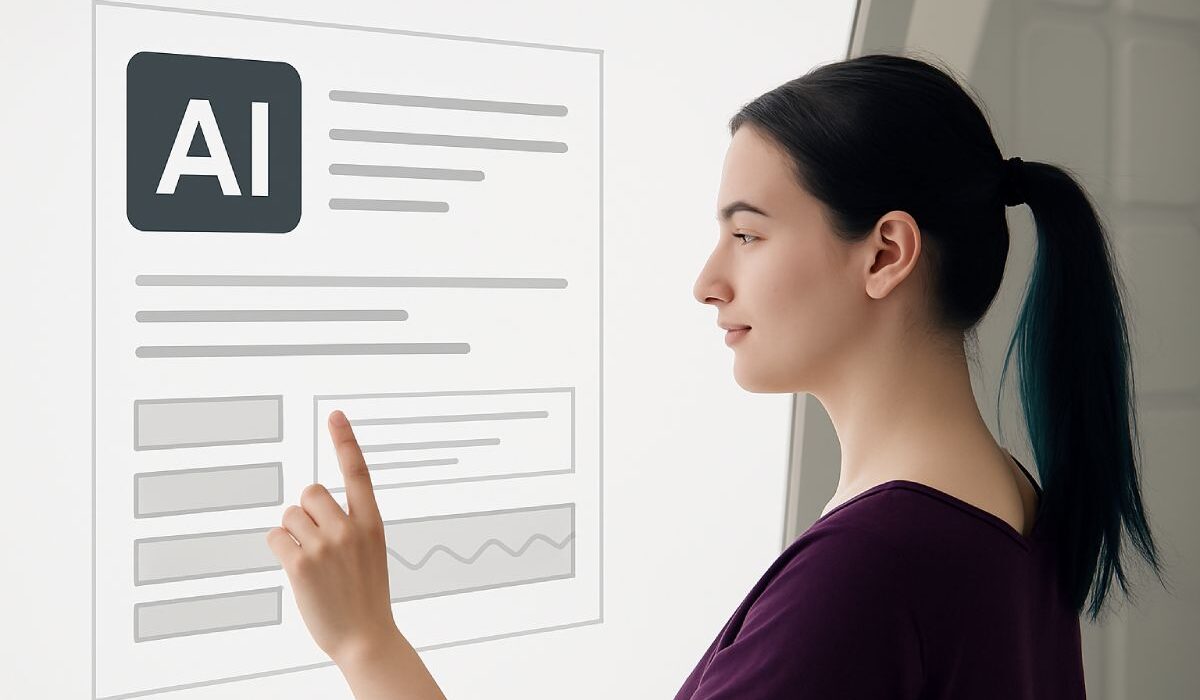AI is changing what UX means—and how it’s delivered. Designing journeys that think ahead is no longer a creative leap; it’s a strategic application of intelligent systems. From predicting user behaviour to automating design flows, AI in UX transforms static experiences into dynamic, adaptive interactions.
This shift isn’t future talk—it’s happening right now, redefining how design services deliver value.
The real challenge? Designing experiences that anticipate what users need before they even ask. That’s where Artificial Intelligence (AI) plays a transformative role.
This evolution is not abstract—it’s measurable.
Let’s examine how AI is actively reshaping UX delivery across key aspects of the design process.
AI in UX: From Buzzword to Business Value
AI in UX design is already reshaping how leading teams design, test, and scale digital experiences. From predictive UX and AI-powered prototyping to automated research, the efficiencies are tangible, and the results are measurable.
Consider the rise of intelligent prototyping. Tools like Figma AI and Uizard now enable the generation of wireframes, flows, and contextual copy within minutes. What once took entire sprints can now be done in hours, allowing UX teams to focus on insight-led innovation instead of repetitive structuring.
“AI will not replace designers, but designers who use AI will replace those who don’t.” – Brian Solis, Digital Anthropologist”
Data-Driven Personalization
Modern UX design is defined by its ability to personalize. AI’s strength in pattern recognition allows teams to interpret behavioral data, cluster user cohorts, and adapt interfaces in real time, especially critical in enterprise software and e-commerce ecosystems.
Through AI-integrated UX research workflows, designers uncover sharper insights into friction points and journey gaps. This ensures the delivery of meaningful, conversion-optimized experiences based on real behaviors, not assumptions.
Predictive UX for Performance
Speed and responsiveness are now UX fundamentals. A Google study reveals that every 100ms delay in mobile load time results in a 7% drop in conversions. Predictive UX uses AI to anticipate user actions, reduce friction, and streamline interfaces.
Heatmap prediction, user journey simulation, and intent-driven UI refinements are now core components of UX design services, enabling teams to build faster, innovative experiences with measurable ROI.
Intelligent Accessibility
Accessibility should not be a checklist item—it should be intrinsic to the experience. AI makes adaptive, inclusive design scalable. Through computer vision and natural language processing, digital products can now dynamically adjust to users with visual, cognitive, or auditory impairments.
AI-powered audits not only ensure compliance with WCAG 2.2 and ADA standards, but they also help raise the bar for inclusion.
Elevating the Role of Designers
AI does not diminish the role of the designer. Instead, it reshapes it. By removing repetition and surfacing insights, AI empowers designers to become orchestrators of adaptive, data-informed systems.
This shift demands a new kind of UX professional—one who blends design thinking with algorithmic reasoning. As seen across leading design teams, the focus is now on curation, not construction.
At BlendX, our UX philosophy blends cognitive science, calm interfaces, and machine learning. The result? Experiences that feel intuitive, perform effortlessly, and reflect the user’s context in real time.
Conclusion: Designing Ahead of the Curve
AI is no longer just enhancing UX design—it’s redefining it. From intelligent prototyping to predictive interfaces and adaptive accessibility, AI empowers design teams to deliver journeys that are not only efficient but also empathetic.
But the power of AI in UX lies in balance. Data may guide the direction, but empathy drives the connection. Human insight, paired with AI precision, is how we create meaningful, future-ready digital experiences.
At BlendX, we build UX that thinks ahead—powered by intelligence, grounded in neuroscience, and designed for real impact.
Curious what AI-driven UX could do for your users?




